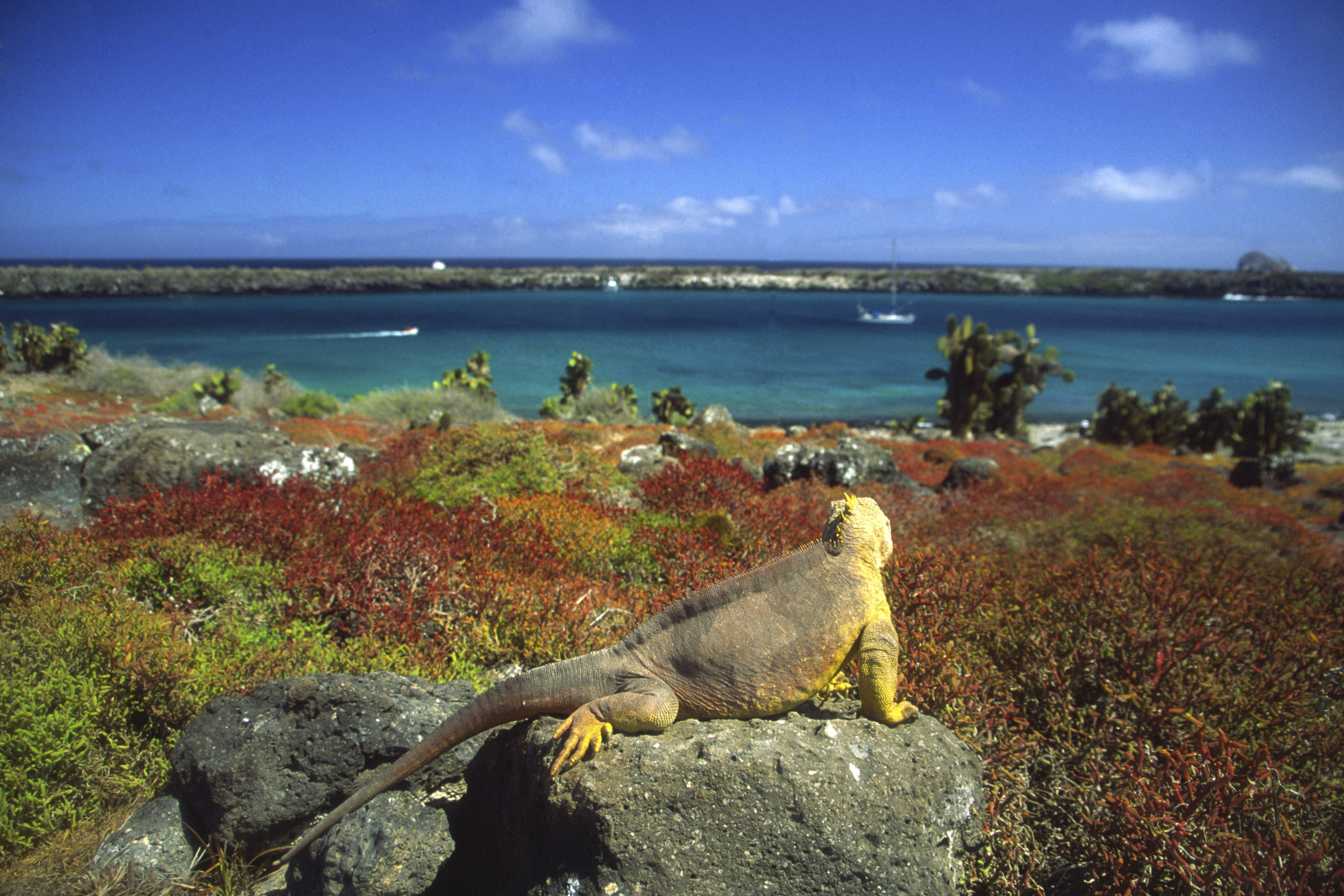The Galapagos Islands, which lie in the Pacific Ocean off the coast of Ecuador, have some of the most unique wildlife in the world, from giant tortoises to vast colonies of seabirds. Visited by Charles Darwin in 1835, the extraordinary animals were the basis for his Theory of Natural Selection. The wildlife is real, but the logistics and cost of traveling around these remote islands are perhaps the last remaining myths about the Galapagos Islands.
1. Traveling to the Galapagos Islands may be a once-in-a-lifetime trip, but it will cost me a small fortune.
It’s all relative, say tour operators who work in the Galapagos Islands.
“It's true that going to the Galapagos is not as affordable as some destinations,” says Peter Grubb of ROW Adventures, which offers trips to the islands. “However, there is a wide range of pricing starting around $2,000 a week without air and going up from there. Specialized active tours tend to be a bit more, but Sea Kayak Adventures' Galapagos by Kayak is one of the more affordable programs, at $3,850 for nine days.”
There are some upfront costs that everyone has to pay just for the privilege of setting foot on the islands, notes Allie Almario of Myths & Mountains, which also operates in the islands. “Right now, current airfare rates from mainland Ecuador to one of the three main islands will run you about $500 per person or more. Then there's the migration card required for all tourists, which runs about $20 per person, and the Galapagos National Park fee of $100 per person.”
That said, the cost of visiting the Galapagos Islands is about 1/3 the cost of an Africa or Antarctica trip, according to Bill Roberson, president of the tour company INCA and a former naturalist guide in Galapagos National Park. The actual cost, he maintains, is also somewhat beside the point.
“No one has ever returned who did not feel that they got more value than expected,” Roberson says. “Their lives were changed by their intimate, face-to-face encounter with wildlife that had no fear of them. It’s an experience that can be had nowhere else on the planet. “
2. The ships that go to the Galapagos are pretty much the same.
There are more than 70 ships to choose from, notes Grubb of ROW Adventures, “from smaller 8-16 passenger yachts that range in quality from tourist class to luxury, and larger ships that take 30-100 or more people. They all operate under a permit from the Galapagos National Park service which dictates where exactly they go, thus also making for a wide variety of routes within the islands.”
How to choose the right ship for you? Roberson of INCA points out that “among the yachts there is a significant range in price, amenities, itineraries, quality of guides, dedication of crew, system redundancies, safety features and level of maintenance. The quality of these essential elements are not discernable on glossy websites.”
He stresses that travelers have to ask questions, do research and ask for references. Companies such as INCA, Row Adventures and Myths & Mountains have essentially already done most of that work for travelers, weeding out the less-than-stellar boats and working only with approved operators.
PHOTO TOUR: Silversea Cruises' Silver Galapagos
3. I don’t like traveling by ship, I’d rather stay in a hotel.
While there are an increasing number of hotels on the islands, most tour operators agree that a small ship is the ideal way to go.
“On land-based trips, most people stay at hotels either at Puerto Ayora on the island of Santa Cruz, San Cristobal or Isabela islands,” notes Almario of Myths & Mountains. “If you stay at a hotel at one of those islands, day trips to nearby islands are limited to those that are reachable within two hours. Land-based itineraries are perfect for those people who are short on time or who tend to get seasick.”
It’s the ships that are key to really seeing the wildlife on the islands, since daily shore excursions are part of every Galapagos cruise.
“The animals don’t come to the hotel, at least not the ones you came to watch,” says Roberson of INCA. “Each of the many Galapagos Islands has its own distinct flora and fauna. Shore-based travelers miss upwards of 90% of the wildlife experience. The most rewarding visitor sites are on islands at the remote edges of the archipelago. If you are content with seeing a few species, giant tortoises, marine iguanas, finches, a few sea birds, and lots of people, then a hotel is for you. But the greatest payoff comes to visitors who visit as many islands as possible.”
4. I don’t have the time for such an exotic trip.
Ecuador is only an about a four-hour flight from Miami and there are also daily non-stop flights from Houston, Dallas, Atlanta, Fort Lauderdale, New York JFK and Newark to Quito and Guayaquil. After an overnight stay, you catch a two-hour jet flight to the Galapagos.
As for permits, smart visitors simply book a tour with a reputable company in advance and leave the planning and permit process to them. Roberson of INCA says that “a guide collects you, your luggage, and off you go to the Island of Santa Cruz to see the giant tortoises, have lunch, see how volcanic islands are formed, check in for the latest news from the Charles Darwin Station and board the yacht. You’ve been gone from home less than 24 hours.”
5. There are other wildlife-watching places just as awesome as the Galapagos.
While safaris in Africa can get you close to game, it's almost always from within the confines of a vehicle, versus being on foot in the Galapagos with nothing between you and the wildlife, point out Grubb of ROW Adventures. “Truly, there is no where on earth where you can get so close to those animals that are unique to the Galapagos such as the marine iguanas, giant tortoises, nesting colonies of seabirds and Darwin's finches. Some tours offer swimming with sea lions, a true highlight of a visit to the Galapagos.”


